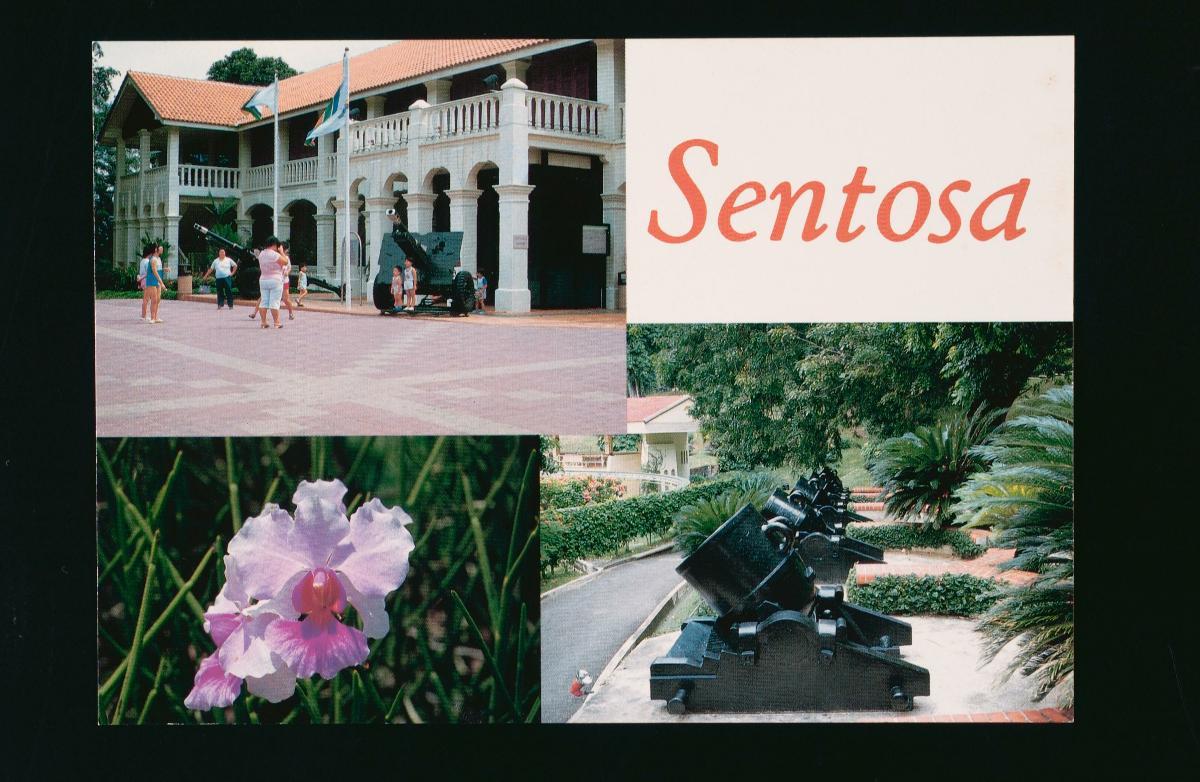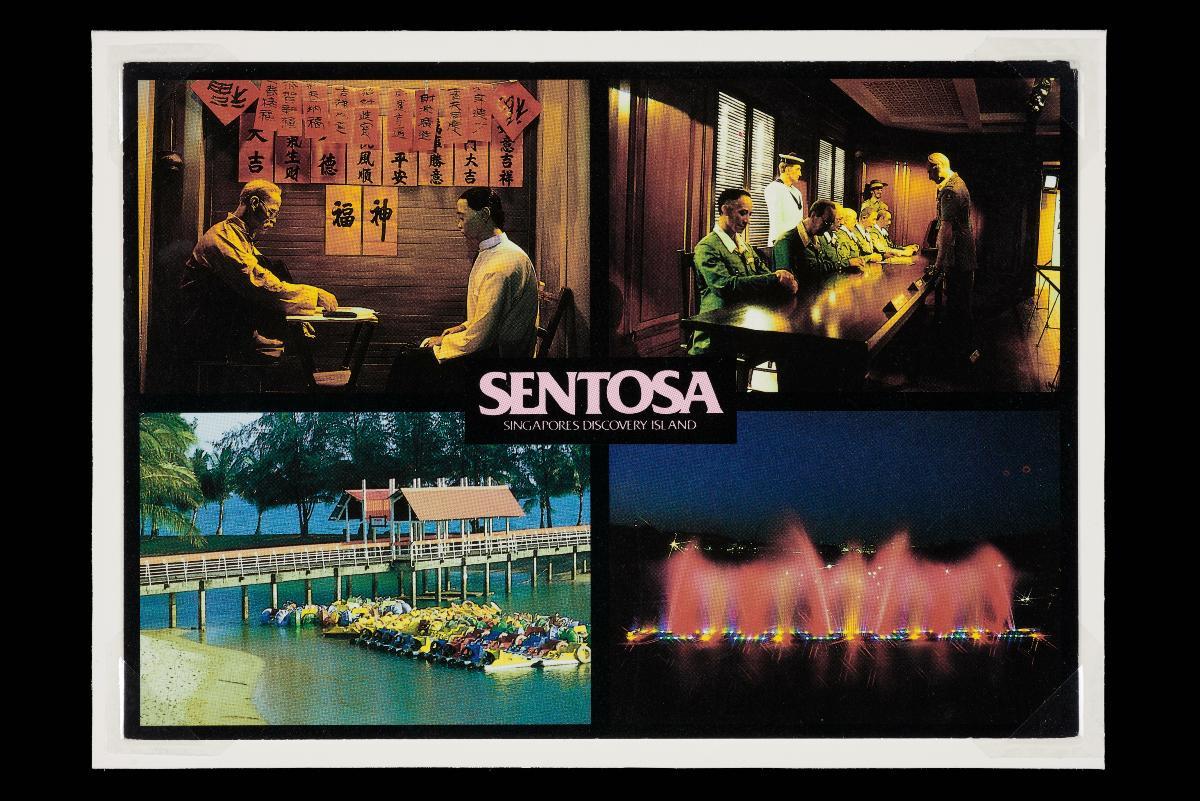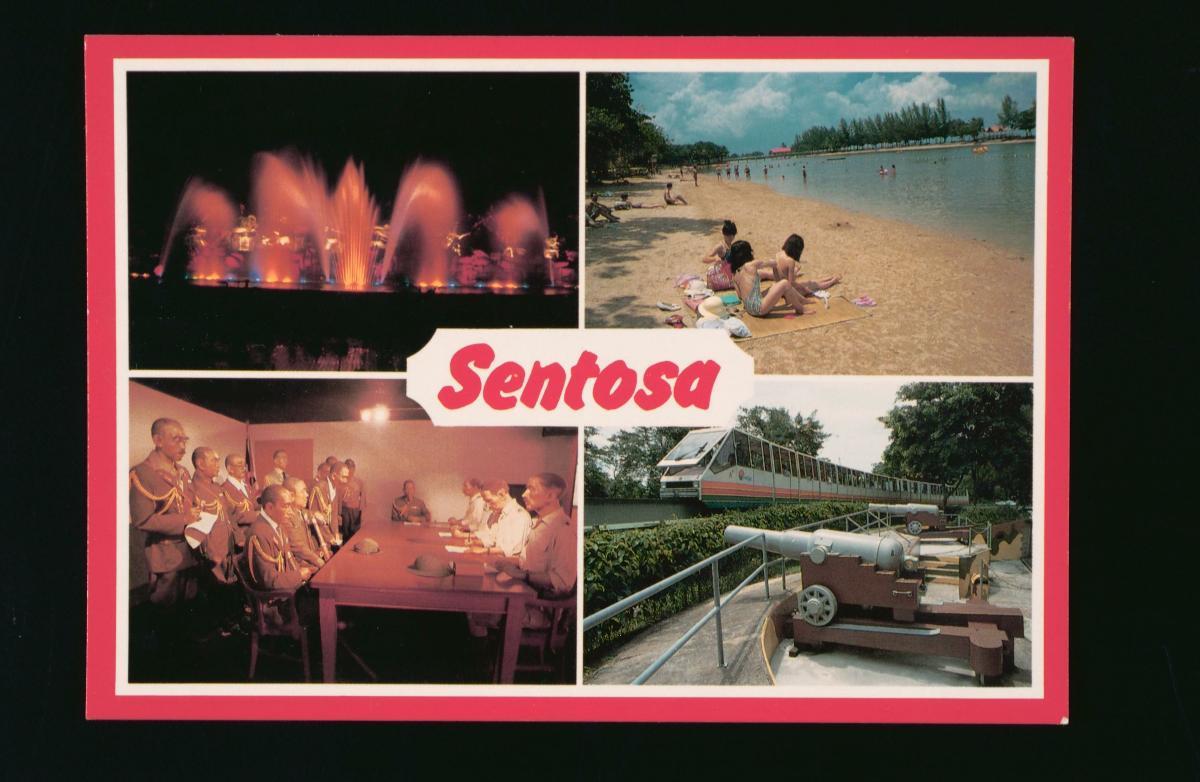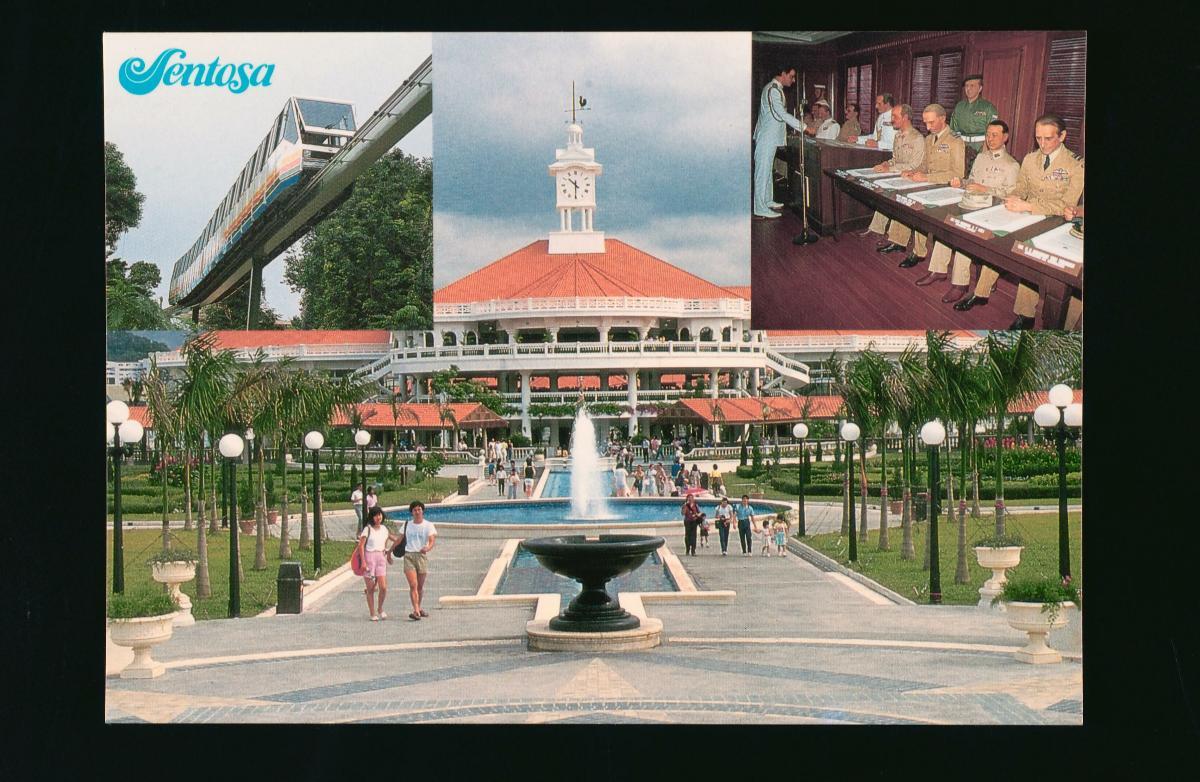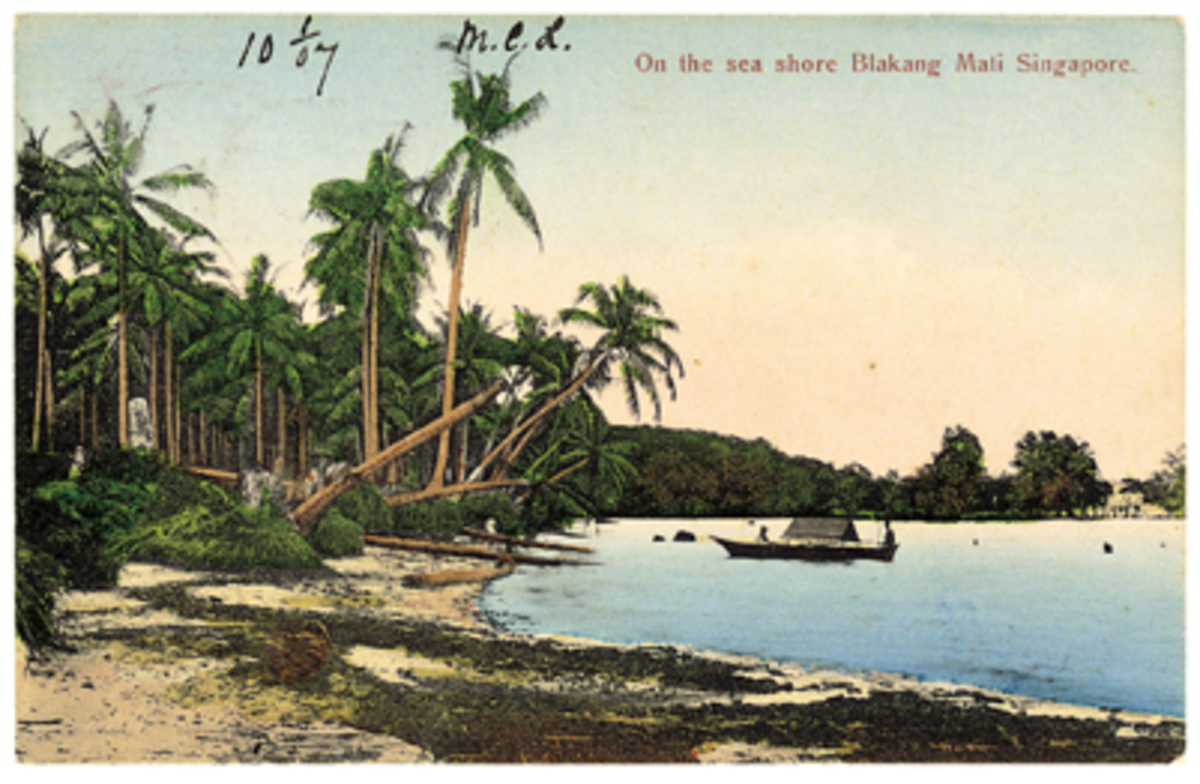Located off the southern coast of mainland Singapore, Sentosa (Isle of Tranquillity) was initially known as Pulau Blakang Mati (Island Behind Death). Starting from the 1880s, the island was an important British military base with a number of forts built on it to protect the southern shipping lanes. In 1970, the island was renamed Sentosa following a naming contest organised by the Singapore Tourist Promotion Board (STPB). The development of the island into a tourist and recreation resort came under the management of the Sentosa Development Corporation (SDC), which was formed in 1972.In 1980, the STPB announced plans for a second round of development to attract more visitors to Sentosa. Subsequently, plans were also made to upgrade existing attractions to keep them attractive to visitors. The Sentosa Wax Museum (top left) was earmarked for an $8.4 million revamp that would involve the creation of a new Pioneers of Singapore Gallery, and the relocation of the Surrender Chambers exhibit to a new wing of the museum. For Fort Siloso (bottom right), a $100,000 interactive Sounds of Siloso exhibit was planned to be built in the fort’s tunnel system. A new $800,000 butterfly park (bottom left) was also planned as part of the expansion plans for the existing World Insectarium attraction. Most of the upgrading works were completed by the late 1980s.





